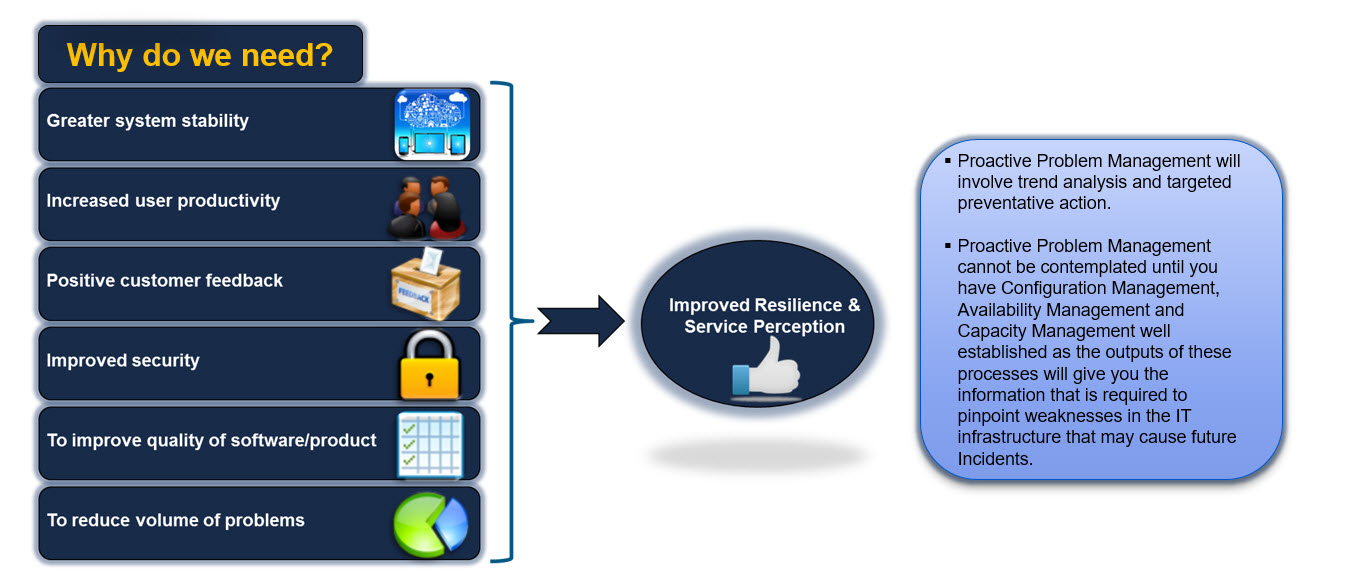IT Service Management – Proactive Problem Management
The goal of Proactive Problem Management is to prevent Incidents by identifying weaknesses in the IT infrastructure and applications, before any issues have been instigated.
Benefits

- Greater system stability – This leads to increased user satisfaction.
- Increased user productivity – This adds to a sizable productivity gain across the enterprise.
- Positive customer feedback – When we proactively approach users who have been experiencing issues and offer to fix their problems the feedback will be positive.
- Improved security – When we reduce security incidents, this leads to increased enterprise security.
- To improve quality of software/product – The data we collect will be used to improve the quality.
- To Reduce volume of problems – Lower the ratio of immediate (Reactive) support efforts against planned support efforts in overall Problem Management process.
Considerations
- Proactive Problem Management can be made easier by the use of a Network Monitoring System.
- Proactive Problem Management is also involved with getting information out to your customers to allow them to solve issues without the need to log an Incident with the Service Desk.
- This would be achieved by the establishment of a searchable Knowledgebase of resolved Incidents, available to your customers over the intranet or internet, or the provision of a useable Frequently Asked Question page that is easily accessible from the home page of the Intranet, or emailed regularly.
- Many organisations are performing Reactive Problem Management; very few are successfully undertaking the proactive part of the process simply because of the difficulties involved in implementation.
- Proactive Problem Management to Business Value
- Cost involved with Proactive vs. Reactive Problem Management
- Establishment of other ITIL processes such as configuration Management, Availability Management and Capacity Management.
Proactive Problem Management – FAQ
Q – At what stage of our ITIL process implementation should we look at Implementing Proactive Problem Management?
- A – Proactive Problem Management cannot be contemplated until you have Configuration Management, Availability Management and Capacity Management well established as the outputs of these processes will give you the information that is required to pinpoint weaknesses in the IT infrastructure that may cause future Incidents.
Q – How can we performance measure and manage?
- A – Moving from reactive to proactive maintenance management requires time, money, human resources, as well as initial and continued support from management. Before improving a process, it is necessary to define the improvement. That definition will lead to the identification of a measurement, or metric. Instead of intuitive expectations of benefits, tangible and objective performance facts are needed. Therefore, the selection of appropriate metrics is an essential starting point for process improvement.
Proactive Problem Management – High Level Process Diagram

Summary
Implementing proactive problem management will require an agreed uniform approach specially when multiple managed service providers (MSPs) involved with an organisation. Hope you found this useful.
Category:
Uncategorized 